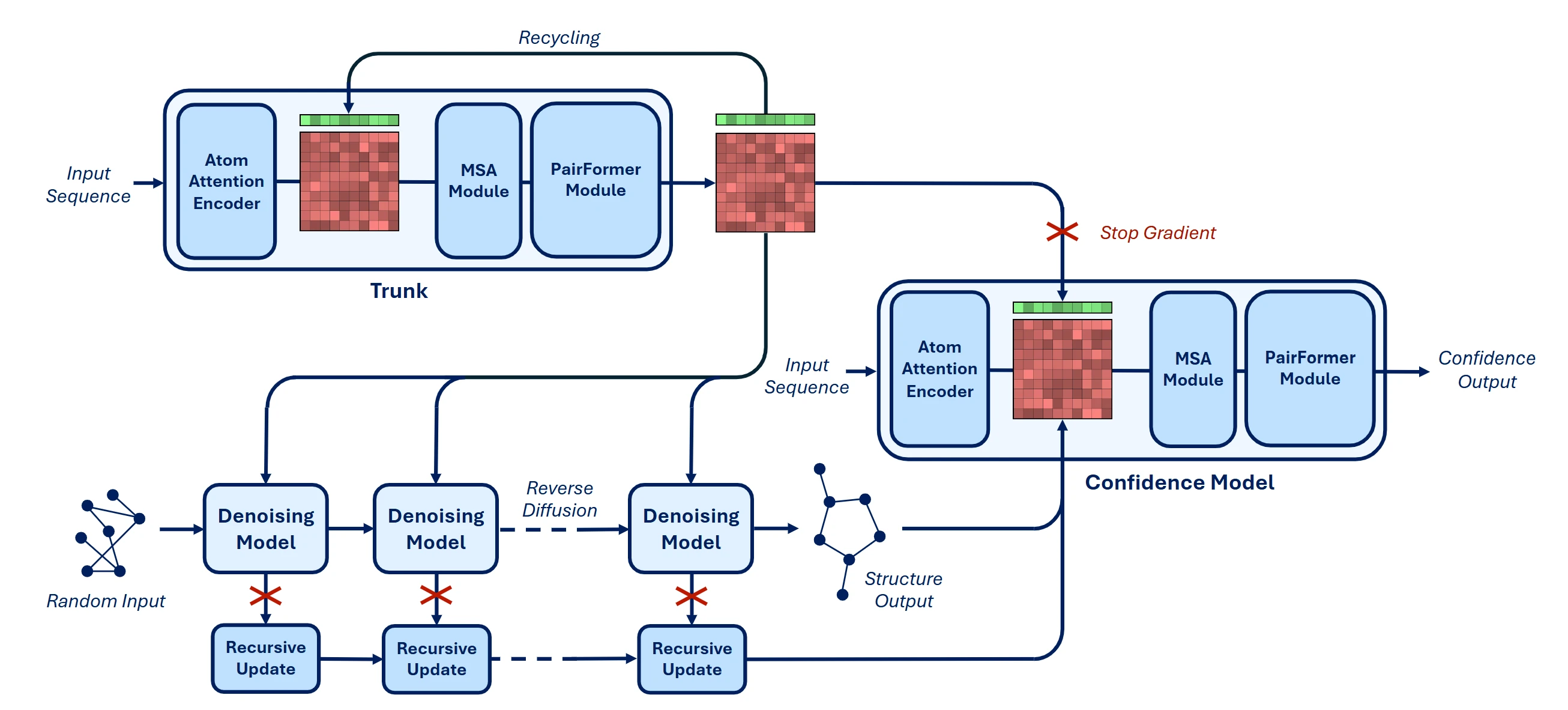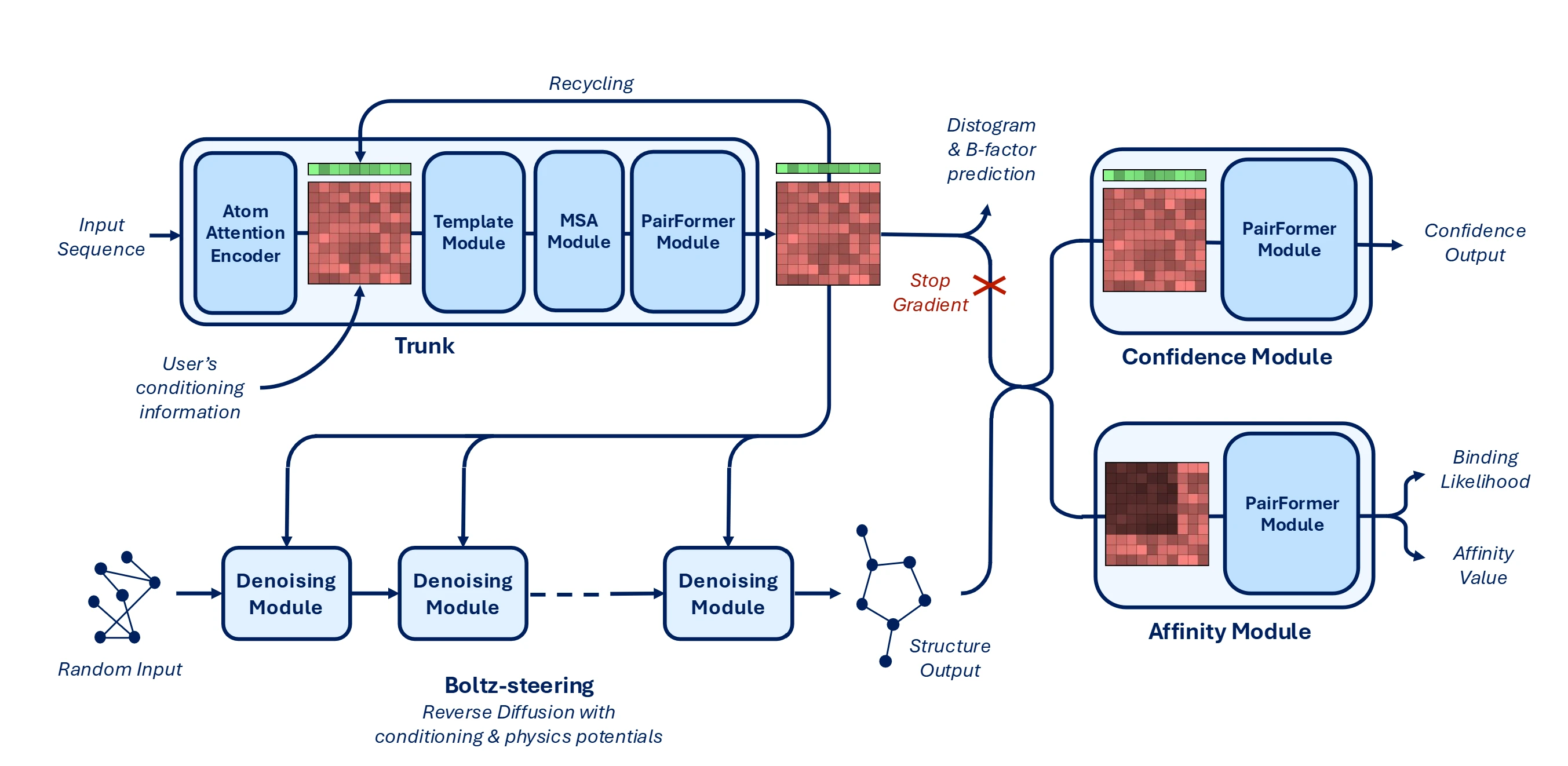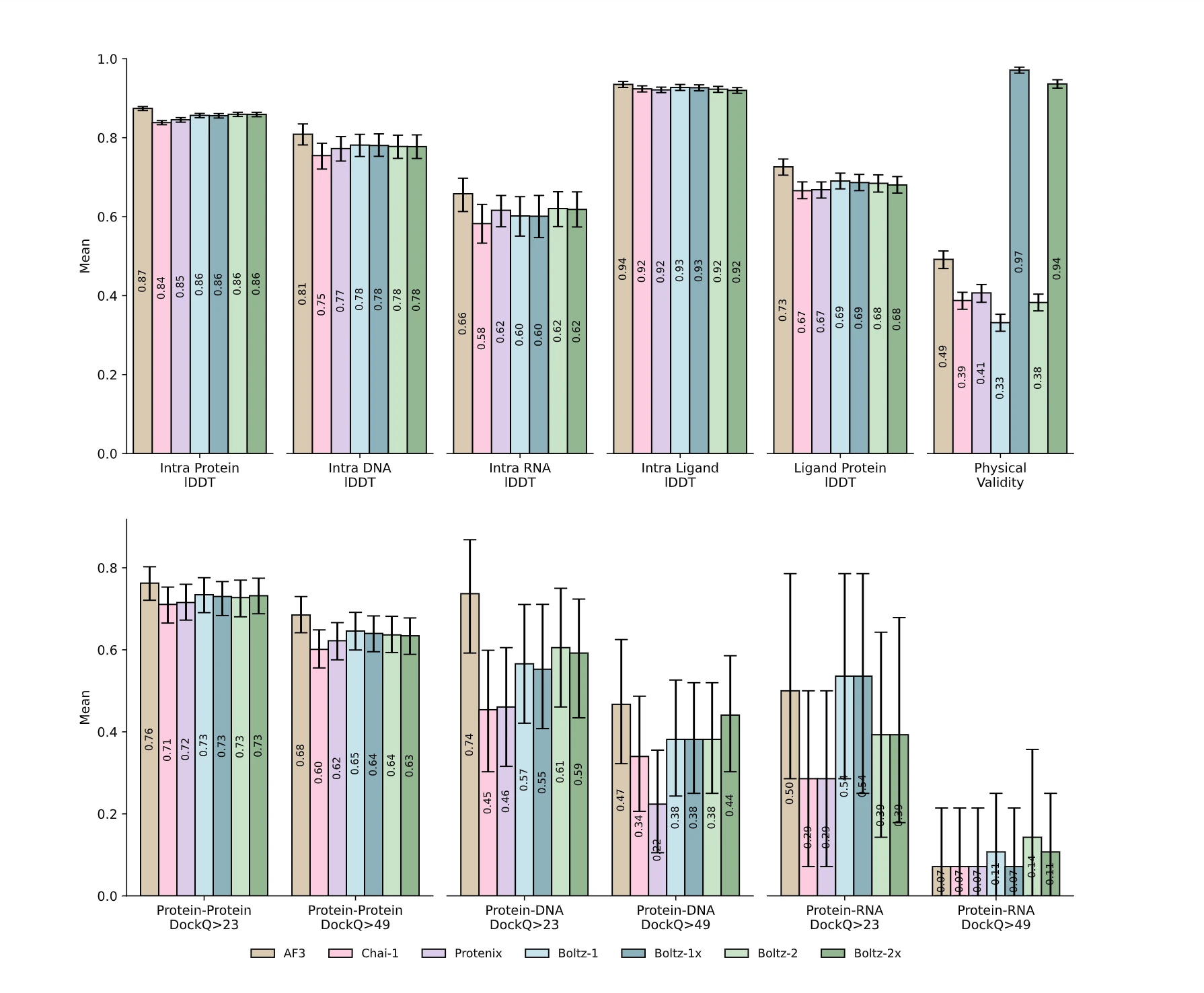Boltz-2: Fast, Controllable & Physically-Grounded Binding-Affinity Prediction – and How It Leaps Past Boltz-1
Written by Danial Gharaie Amirabadi | Published 2025-6-16
Written by Danial Gharaie Amirabadi | Published 2025-6-16
Accurately modeling how tightly a ligand binds to its target is still one of the hardest steps in structure-based drug discovery. Deep-learning co-folders such as AlphaFold3 and Boltz-1 revolutionized structure prediction, yet they came with no built-in mechanism to quantify binding affinity. Boltz-2 closes that gap: it is the first AI system to approach FEP-level accuracy while running ≥ 1,000x more efficient. Below is a technical walkthrough of what changed from Boltz-1, why those changes matter scientifically, and how practitioners can exploit Boltz-2 today.
Binding affinity dictates potency, selectivity, and ultimately clinical success. Traditional atomistic simulations deliver reliable affinities but remain too slow for the millions of molecules examined during hit discovery and lead optimization . Machine-learning surrogates promise speed, yet until Boltz-2 none reached physics-grade precision.


| Boltz-1 (2024) | Boltz-2 (2025) |
|---|---|
| Co-folds proteins, nucleic acids & ligands | Adds regression of IC50 values |
| Optional post-hoc “Boltz-steering” | Steering integrated and expanded |
| No template or constraint control | Method, multimeric-template & distance conditioning |
| 48 PairFormer layers (structure prediction trunk) | 64 PairFormer layers (structure prediction trunk), trifast triangle attention |
Boltz-2 replaces float32 with bfloat16 throughout the trunk and introduces trifast kernels for triangle attention, shrinking compute while enabling larger 768-token crops during training .
The Boltz-steering potentials—formerly an add-on called Boltz-1x—are now baked into inference (Boltz-2x), eliminating steric clashes, improper chirality, and other artifacts without hurting accuracy .
Users can now:
All three knobs are new compared to Boltz-1 , and the multimeric-template support plus hard steering are unique among open models .
A PairFormer-based dual head sits on top of the structural trunk: one branch outputs a binder-vs-non-binder probability, the other regresses continuous affinity values on the μM-scaled log axis. Training mixes Ki, Kd, IC50 data and leverages the latent co-fold representation, letting Boltz-2 learn structure–activity relationships end-to-end.

| Task | Metric | Gain vs Boltz-1 / Baselines |
|---|---|---|
| Structure (antibody–antigen, RNA, DNA–protein) | higher recall-lDDT & RMSF correlation | Consistent improvements across modalities |
| Affinity (FEP+ 4-target) | Pearson R = 0.66 | Beats all ML baselines, nears OpenFE physics |
| CASP16 Affinity Challenge | ranks #1 | Outperforms every competition entry out-of-the-box |
| Speed | ≈ 20 GPU-seconds / complex | > 1,000 × more efficient than classical FEP |
Even with its leap in binding-affinity prediction and continued gains in complex-structure accuracy, Boltz-2 still inherits—and sometimes exposes—several bottlenecks that future releases must tackle head-on:
| Limitation | Scientific Impact | Root Cause(s) |
|---|---|---|
| Molecular-Dynamics | On flexible targets, Boltz-2 performs only on par with MD-aware baselines such as AlphaFlow and BioEmu. | 1. Late-stage training used a small MD ensemble. 2. Only minor architectural tweaks for multi-conformer signals. |
| Structure-prediction plateau on large assemblies | Accuracy improvements over Boltz-1 are real but not game-changing, especially for large multi-chain complexes or bind-induced conformational shifts. | Structural training corpora & backbone design largely mirror Boltz-1. |
| Affinity module depends on flawless input structures | Mis-locating a binding pocket or ignoring a cofactor cascades into poor affinity predictions. | 1. No explicit representation of ions, ordered waters, or multi-partner interfaces. 2. Fixed (and sometimes too small) affinity crop may truncate long-range interactions. |
| Assay-dependent performance variance | wide swings in Pearson R across biochemical vs. cell-based assays. | 1. Structure inaccuracies for certain protein families. 2. Limited exposure to out-of-distribution chemotypes. |
Curious about what Boltz-2 can do? Check out our Boltz-2 service and see it in action.
By Danial Gharaie Amirabadi
By Keaun Amani
By Amélie Lagacé-O'Connor
By Keaun Amani
By Amélie Lagacé-O'Connor
By Amélie Lagacé-O'Connor
Register for free — upgrade anytime.
Interested in getting a license? Contact Sales.
Sign up free